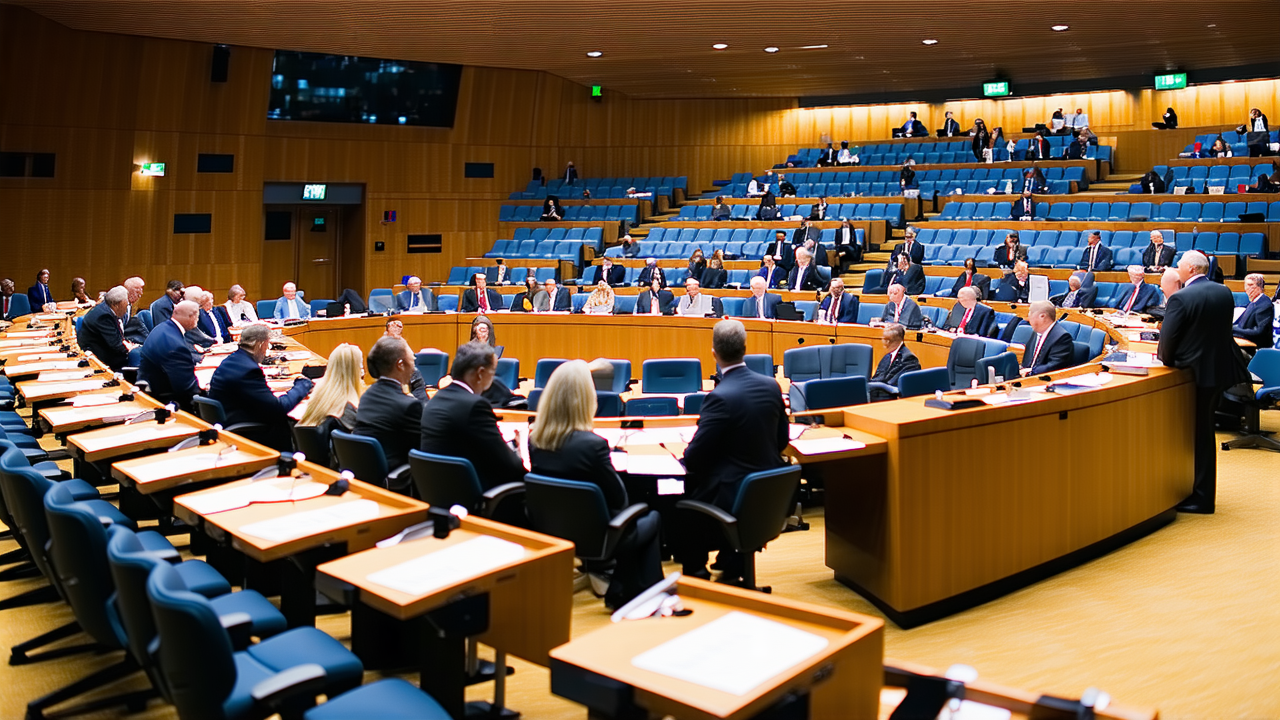Southern councils agree to joint water services despite tensions
Southern Councils Reluctantly Agree to Jointly Deliver Water Services
Clutha District Council has reluctantly agreed to partner with other southern councils to deliver water services, despite feeling pressured into a difficult position. With less than a month to submit their water service delivery plans to the Department of Internal Affairs, the decision marks a pivotal moment for regional governance in New Zealand.
Four southern councils had previously aimed to establish a jointly owned, council-controlled organisation to manage water services. However, last month, the Waitaki District Council withdrew from the plan, leaving the remaining councils to reconsider their approach. Earlier this week, the Central Otago and Gore district councils both voted to continue with the Southern Water Done Well model, showing a degree of unity despite uncertainty.
On Wednesday, Clutha District councillors met to assess whether the updated figures for only three councils would justify continuing with the Southern Water Done Well model. An analysis by Morrison Low Advisory, presented at the meeting, suggested that ratepayers across the three councils would save approximately $392 million by 2054 through the joint entity. This was $220 million less than the estimated savings if Waitaki had remained in the partnership, though the analysis noted that the figures were based on conservative assumptions and more savings could be achieved if more councils joined in the future.
The decision was not unanimous, with several councillors expressing frustration and concerns. Cluth, the district’s mayor, stated he was “gutted and furious,” but emphasized that the new entity was the only way to avoid government intervention. He highlighted the council’s rising debt, cost pressures, and the looming deadline as key factors in the decision.
Mayor Bryan Cadogan stressed that the council had a moral and democratic responsibility to protect ratepayers from having decisions made by a “complete stranger from Wellington.” He warned that if the council tried to go it alone, the government would step in, leaving councillors with no say in the process.
Councillor Dane Catherwood expressed concern over the potential for separate rates and water bills, which could be more expensive for ratepayers. Deputy Mayor Ken Payne echoed this sentiment, stating that the council felt they only had one option, even if they did not like it.
Councillor Gaynor Finch acknowledged the risk of handing over district assets but believed the partnership was the only way to avoid government intervention. Councillor Brent Mackie, however, resented the feeling that ratepayers were being threatened and that the district was being bullied.
Councillor Jock Martin argued that if the council backed its own staff and processes, they could deliver a better, cheaper service. The analysis was peer-reviewed by Concept Consulting and Infometrics, with all three firms concluding that the Southern Water Done Well model remained the most viable option for the three councils.
Councillors also voted to consider the possibility of the Timaru and Waitaki District Councils joining the partnership in the future. During the meeting, they were informed that the Waitaki District Council’s water plan had significant gaps, and the Department of Internal Affairs had advised that a specialist would likely be sent in to take over decision-making. The council was expected to rejoin the southern partnership.
Councillor Alison Ludemann emphasized that no extra costs should fall on the existing councils if another council sought to join, and any request needed to be discussed collectively.
For Clutha ratepayers, the analysis found that a joint water services entity would reduce the impact of three waters debt and revenue on the council’s borrowing limits. This would improve the council’s debt-to-revenue ratio, allowing for an additional $8 million of borrowing capacity.
However, the analysis also highlighted risks, including the potential erosion of local control and the possible loss of high-value jobs in some districts as work was centralized. Additionally, the transition to a regional pricing model could lead to higher charges for some customers.
“The entity will be designed to protect local communities and ensure fair, effective governance,” said Tamah Alley, the chair of Southern Water Done Well and mayor of Central Otago. “The model is regionally focused, community-driven, and ensures that decisions about water services remain in local hands.”
Working together remains the best way for councils to achieve their shared goal of providing the most efficient and effective water services for their communities, both now and in the future. The new water services entity is set to begin operations by July 2027, covering 24 urban and 10 rural water supplies.
